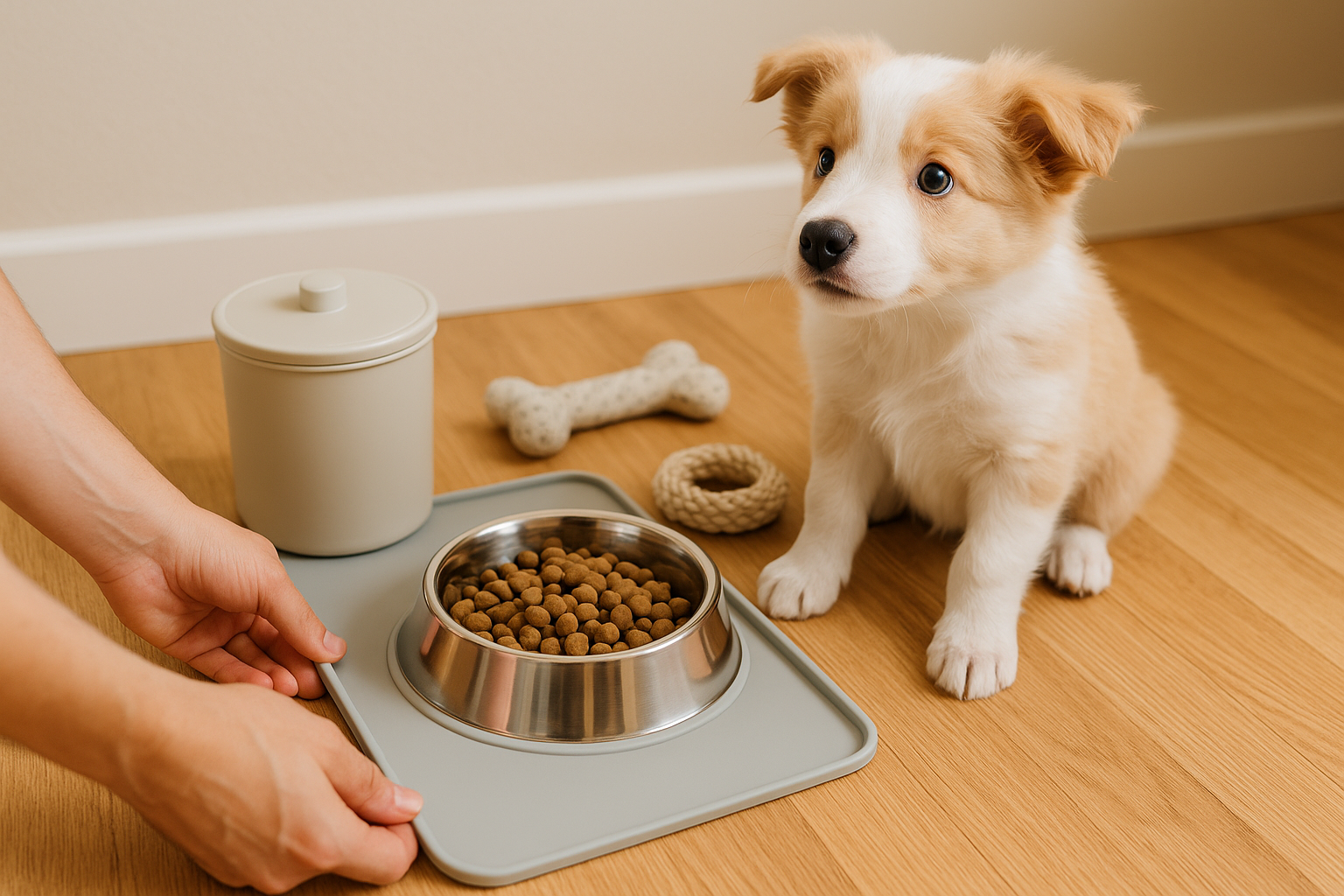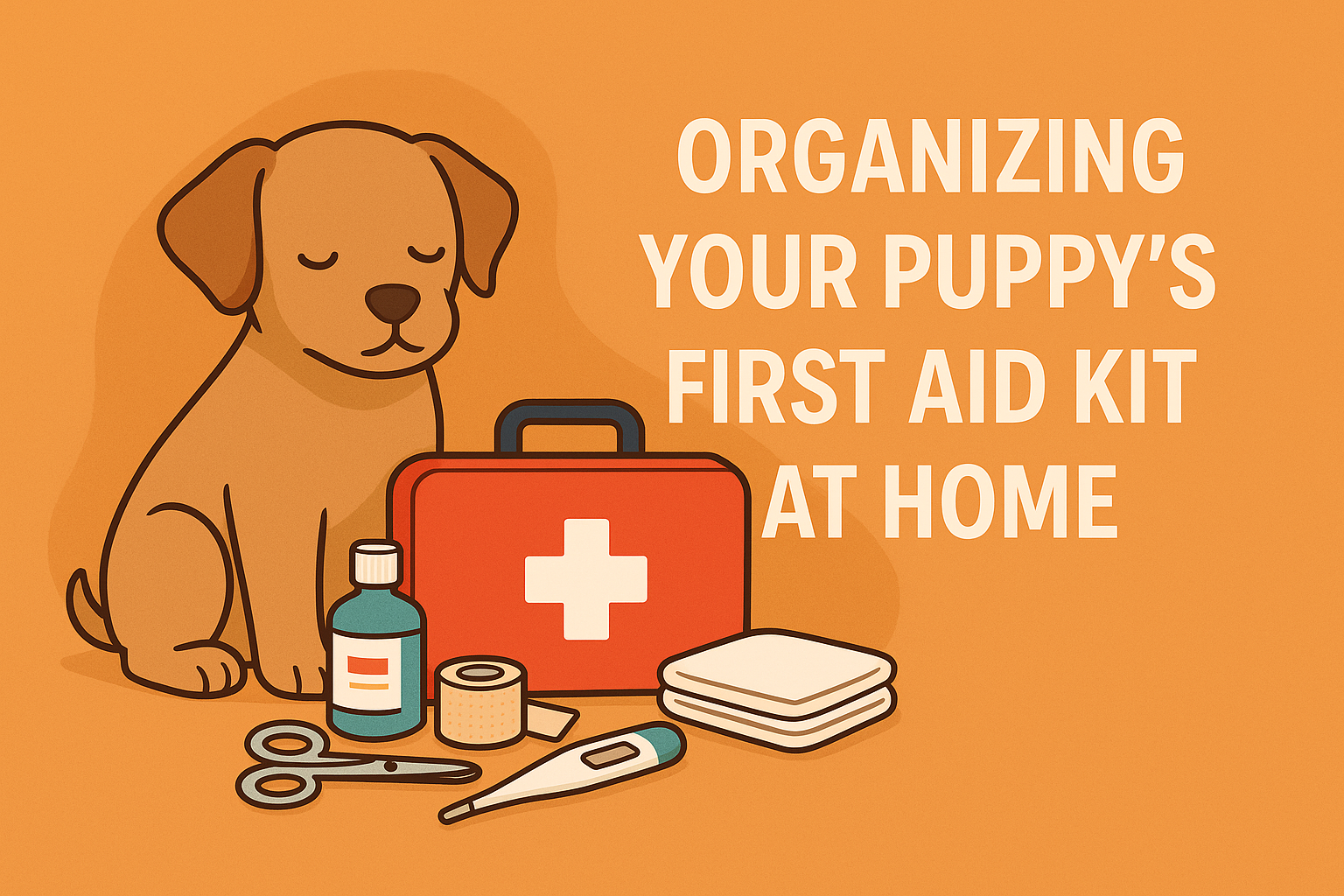Importance of a Dedicated Feeding Station for Puppies
Creating a dedicated feeding station for your puppy is essential for both organization and their overall well-being. This designated area ensures your puppy knows where to eat, fostering a sense of routine and security. Moreover, having a specific spot for meals helps keep the rest of your home tidy and uncluttered, minimizing mess and chaos.
Choosing the Right Location
Factors to Consider for Location
When selecting a spot for your puppy’s feeding station, consider its accessibility for your furry friend. The area should be easy for the puppy to reach, without any obstacles that might cause stress or accidents. It is also best to choose a quiet, low-traffic area in your home, as this helps your puppy feel relaxed and focused during meal times. Distance from household distractions, such as loud appliances or busy pathways, is important to minimize anxiety and maintain a positive eating experience.
Space and Room Considerations
Ample space should be available for your puppy to move comfortably around the feeding station. Avoid setting up the area in high-traffic zones where the puppy might be jostled or disturbed. An ideal feeding area is a peaceful corner where your puppy can dine undisturbed, which encourages better eating habits and a happier mealtime experience. 🐾
Essential Equipment for a Puppy Feeding Station
Types of Feeding Bowls
Choosing the right feeding bowls for your puppy involves considering material options such as stainless steel or ceramic. Stainless steel bowls are rust-resistant and easy to clean, making them a popular choice among pet owners, while ceramic bowls offer a heavier option that’s harder for playful puppies to tip over. Ensure the bowl size is appropriate for the breed of your puppy—small breeds require smaller, more manageable bowls, whereas larger puppies need a bowl that accommodates their size and appetite.
Food Storage Solutions
Proper food storage is key to maintaining your puppy’s health. Airtight containers are ideal for storing dry food, keeping it fresh and free from pests. Wet food, on the other hand, may require refrigeration to maintain its quality and prevent spoilage. According to the American Kennel Club, “Proper storage helps preserve the nutritional content of your puppy’s food and prevents exposure to pests and bacteria.”
Water Supply Considerations
Ensuring your puppy has access to fresh water is essential. Regularly replenished water bowls or automatic water dispensers can provide continuous access to clean water, promoting hydration and health. Automatic dispensers, in particular, are convenient and maintain a consistent supply without needing constant refills.
Creating a Comfortable Feeding Environment
A secure and comfortable feeding environment is crucial for your puppy’s well-being. Non-slip mats underneath bowls prevent sliding, providing stability as your puppy eats. Surfaces should be easy to clean to manage spills and maintain hygiene effortlessly. Additionally, consider the temperature of the feeding area—avoid places that are excessively hot or cold, ensuring your puppy is comfortable throughout meal times. 🌡️
Training Puppies to Use the Feeding Station
Establishing a Feeding Routine
Creating a regular feeding schedule helps puppies develop a consistent routine. By feeding them at the same times each day, you instill a sense of predictability, which is comforting for your puppy. Use positive reinforcement techniques, such as treats or praise, to encourage good behavior as your puppy learns where and when to eat.
Transitioning Puppies Gradually
Introduce the feeding station slowly, allowing your puppy to adjust to the new setup. Begin by placing their food in the designated area and guiding them gently during meal times. Over time, your puppy will naturally gravitate to their feeding station, associating it with nourishment and positive experiences.
Safety and Hygiene Considerations
Maintaining clean feeding equipment is critical for your puppy’s health. Regular cleaning prevents bacteria buildup and keeps your puppy safe. Monitor their food and water intake for any changes that could indicate health issues. Furthermore, prevent contamination by ensuring spills are promptly cleaned and food is stored properly, reducing the risk of pests and spoilage.
Troubleshooting Common Challenges
Addressing Picky Eating Habits
Picky eating can be a common issue with puppies. If your puppy is hesitant to eat, try different food flavors or textures to spark their interest. It might also be helpful to warm up their food slightly to enhance its aroma.
Solving Issues with Other Pets During Feeding Time
If you have multiple pets, you may need to address competition at meal times. Feed each pet separately in distinct areas to prevent tussles and ensure every pet enjoys their food without stress. 🐶🐱
Managing Feeding Station Clutter
Keep the feeding area tidy by regularly decluttering. Store food and bowls neatly, and clean up any spills to prevent mess and maintain a pleasant environment for your puppy.
Conclusion
Setting up a puppy feeding station is an enriching process that combines organization with care for your pet. This dedicated space offers countless benefits, from fostering a safe and healthy eating environment to establishing a stable routine for your puppy’s meals. Tailor your feeding station to meet the unique needs of your puppy and share your successes, tips, and adorable dining moments in the comments below. 🐕❤️# FAQ: Puppy Feeding Station Setup
How important is the location of a puppy feeding station?
The location of a puppy feeding station is crucial because it directly impacts your puppy’s comfort and eating habits. A well-chosen spot that is quiet and away from household distractions helps create a stress-free environment, allowing your puppy to focus on eating. Additionally, the accessibility of the station ensures that your puppy can reach their food with ease, promoting regular and healthy eating patterns.
What type of feeding bowls are best for puppies?
Feeding bowls for puppies come in a variety of materials, including stainless steel and ceramic. Stainless steel bowls are durable, rust-resistant, and easy to clean, which makes them a popular choice for many pet owners. Ceramic bowls are heavier and therefore, harder to tip over, which is useful for playful puppies. The size of the bowl is equally important and should be chosen based on the puppy’s breed to ensure proper portion control and to accommodate their appetite comfortably.
Why is proper food storage important for a puppy feeding station?
Proper food storage is vital to preserve the nutritional integrity of your puppy’s food and to protect it from pests and contamination. Airtight containers are ideal for storing dry food, as they keep it fresh and prevent spoilage. Wet food requires refrigeration, which helps maintain its quality and prevents rapid spoilage. Good storage practices ensure that your puppy receives all the necessary nutrients from their food and stays healthy.
How can I make the feeding station more comfortable for my puppy?
Creating a comfortable feeding environment involves using non-slip mats to prevent bowls from sliding while your puppy eats. This stability enhances your puppy’s eating experience and reduces spills. Surfaces in the feeding area should be easy to clean, allowing you to maintain hygiene effortlessly. Ensure that the area is not in excessively hot or cold spots, as a consistent and comfortable temperature is important for your puppy’s well-being during meal times.
How do I train my puppy to use the feeding station?
Training your puppy to use the feeding station involves establishing a regular feeding routine and using positive reinforcement methods. Feed your puppy at the same times each day to build a predictable routine, which is comforting and helps with behavioral training. Gradually introduce the feeding station by guiding your puppy to the area during meal times and rewarding them for eating calmly and appropriately in the designated spot.
What should I do if my puppy is a picky eater?
If your puppy is a picky eater, consider experimenting with different flavors and textures to find what they prefer. Sometimes, warming their food slightly can enhance its aroma and make it more appealing. Patience is key, and ensuring a consistent feeding schedule can also help your puppy develop a regular appetite.
How can I prevent issues with other pets during meal times?
To prevent issues with other pets during meal times, it’s a good idea to feed each pet in separate areas. This separation minimizes the potential for competition or tension, allowing each pet to enjoy their meal in peace. Establishing distinct feeding zones ensures that all pets have a stress-free eating experience.
How do I maintain cleanliness at the feeding station?
Maintaining cleanliness at the feeding station involves regular cleaning of bowls and surfaces to prevent bacteria buildup. Promptly clean up any spills to prevent attracting pests and keep the area tidy. Additionally, decluttering the space and properly storing food and dishes helps manage the feeding station efficiently and reduces the potential for mess.








